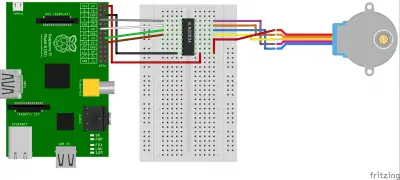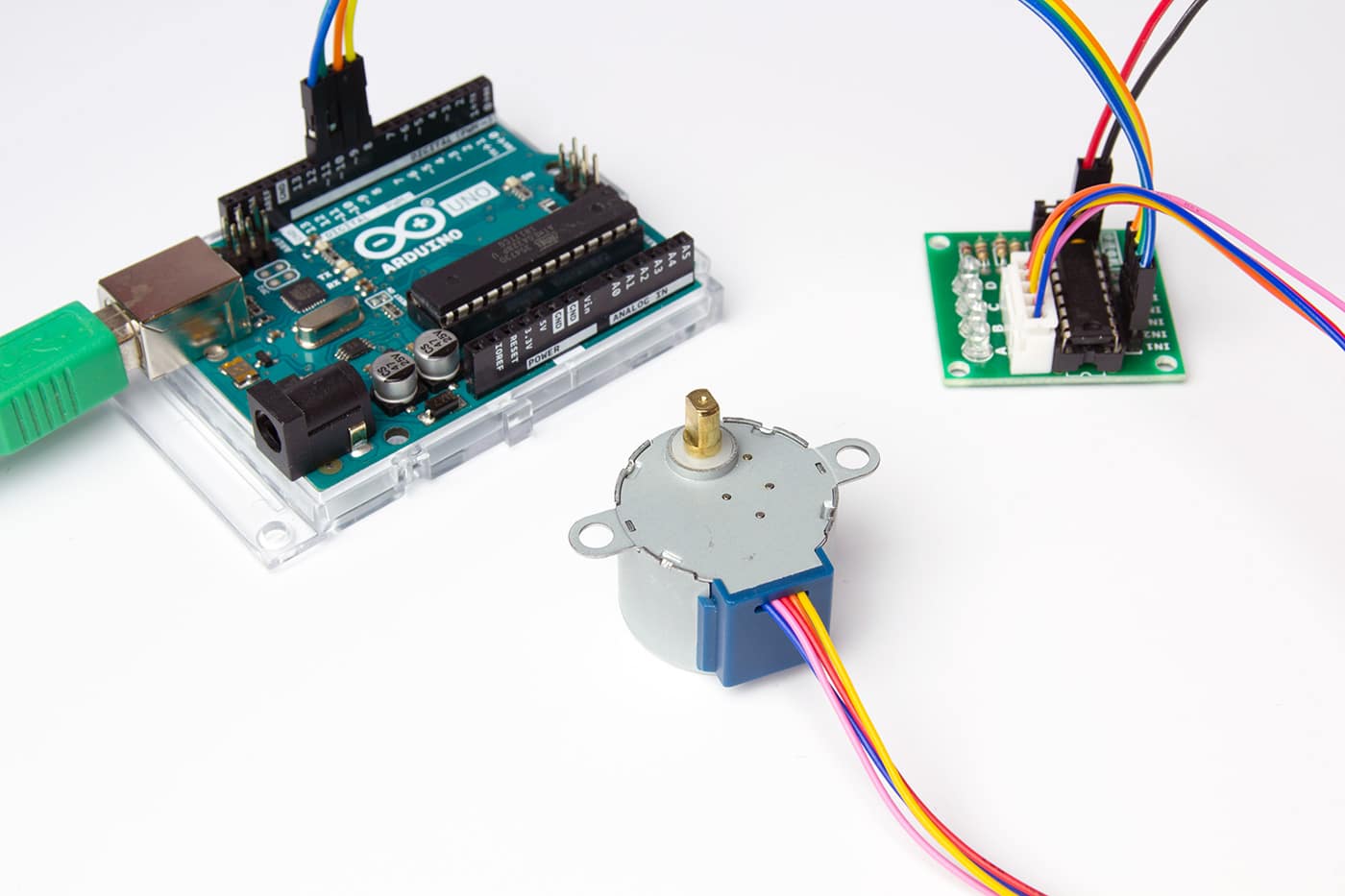Comments

Mar 04, 2019 Connecting the 28BYJ-48 stepper motor to the ULN2003 driver board. Usually, the 28BYJ-48 stepper motor comes with a 5-pin connector that will fit to the ULN2003 driver board. Connecting the ULN2003 driver board to the Arduino. Connect the ULN2003 driver lN1, lN2, lN3, lN4 to the Arduino digital pins 8, 9, 10, and 11 respectively. Information about the 28BYJ-48 stepper motor and ULN2003 driver board. The 28BYJ-48 is one of the cheapest stepper motors you can find.Although it is not super accurate or powerful, it is a great motor to use for smaller projects or if you just want to learn about stepper motors.

Dc Motor Driver
- When you need to be able to reverse the DC motor then the complexity of a H-bridge is needed. When all you need to do is control the motor or even PWM it then there's this wonderful 3-pin IC called a 'MOSFET'. Yeah, and what's more, they are usually rated to handle many 10's of amps so that motor stall should never be a problem. You can even drive them from 3.3V with only a single I/O.
Ok, sounds over the top maybe? But it's true and it is exactly what I would use. Why use a space pen when a pencil will do?
Thank you all
Here is the article.
https://electrosome.com/dc-motor-l293d-pic-microcontroller/
You just replace that micro with a Stamp (BS1 to BS2p40) or Propeller.
The article is the level of this forum.
So. That is how to connect Parallax micro to DC motor.
There may still be a Parallax article or Nuts and Volts or Application Note out there somewhere like it.
Happy holiday! 14 days til Christmas!- So you are not really interested in finding out how to do it then?
How hard is it to connect the 2 wires of a DC motor?
I've not seen you follow through on any of your 'problems'.
Maybe you just like creating a stir?
I could be wrong but moderators please take note.
Happy holiday! - edited 2018-12-10 - 04:34:41'When you need to be able to reverse the DC motor then the complexity of a H-bridge is needed'
Thank you for that.
Will connect up some of this stuff.
Using a 4.5 volt 3 AA battery box to power motor.
It's a motor on a Tamiya wheel ratio kit. Turns some different diameter wheels with rubber bands for belts.
No 'belts' on it.
Happy holidays! - For those of you wandering through this thread looking for suggestions and examples of DC motor control using a Basic Stamp or Propeller, do have a look at the Nuts and Volts columns, particularly Vol 1, #23. This is a long-running series of columns in Nuts and Volts magazine most by JonnyMac on a variety of topics, complete with easy to understand discussions and explanations and practical examples.
- microcontrolleruser,
I thought you wanted to know how to connect 2 motors to an L293D and I have seen much better tutorials than the one you linked to.
https://itp.nyu.edu/physcomp/labs/motors-and-transistors/dc-motor-control-using-an-h-bridge/
Mike,
That's a good article and it even has something for Erco (controlling 2 motors with relays through a ULN2003).
Thank you Mike
There we go a Nuts and Volts article on it. Suspected there was one out there.
Probably an application note too.
Thank you Genetix
'I thought you wanted to know how to connect 2 motors to an L293D'
Not me. That would be like saying I wanted to hook up four because I looked at ULN2003 first.
Nope. Just one motor.
I do not think there is an IC for just one motor.
The L293D just throws in a circuit for extra motor. That was a common sense thing to do.
Happy holidays!
Here is the L293D in a nutshell.Control Signals and Motor Status
RB0/IN1 RB2/IN2 Motor Status
LOW LOW Stops
LOW HIGH Anti-Clockwise
HIGH LOW Clockwise
HIGH HIGH Stops